Under Capricorn (1948)
Directed by: Alfred Hitchcock
Written by: Helen Simpson, Hume Cronyn, James Bridie, John Colton, Margaret Linden
Starring: Ingrid Bergman, Joseph Cotten, Margaret Leighton, Michael Wilding
HCF REWIND NO. 219: UNDER CAPRICORN [US 1948]
RUNNING TIME: 117 min
AVAILABLE ON DVD
THE HITCHCOCK CAMEO: (a) In Sydney’s town square during a parade, in the milling crowd wearing a grayish coat and brown hat (right side of picture, back to camera). (b) One of three men on the steps of Government House.
REVIEWED BY: Dr Lenera, Official HCF Critic
in 1831, Sydney is a frontier town, full of ex-convicts. Accompanying the new governor is his nephew Charles Adare, who is hoping to make his fortune. He’s befriended by Samson Flusky, a prosperous businessman who was previously a transported convict and possibly even a murderer. Sam says that because he has bought the legal limit of land, he wants Charles to buy up land and then sell it to him for a tidy profit so that Sam can accumulate even more frontier territory. Charles is invited to dinner at Sam’s house and is surprised when the wives of all the male guests have made excuses not to attend. He’s even more surprised when he recognises Sam’s wife, Lady Henrietta, whom he knew as a child in Ireland, and who is now a tormented alcoholic….
Now this really is an odd Hitchcock film and definitely one that could be called ‘cult’. It’s one that is often considered to be one of his worst sound pictures, but it has a small following and is very highly considered in France, a country which often seems to me to be in the forefront of intelligent criticism and the one where Hitchcock first began to be truly appreciated as an artist rather than just an entertainer. My feelings about the film lie somewhat in the middle, albeit leaning just a little to the ‘positive’. It’s nowhere near being one of Hitchcock’s best films, the director obviously more focused on doing his long takes [as in his previous film Rope] than the story for much of the time, and it never convinces of its 1830 Australian setting, but approached as a florid melodrama rather than a thriller, albeit a melodrama with distinct echoes of several of Hitchcock’s other 1940’s pictures [some of them seemingly inserted by the director], it’s oddly compulsive and compelling, with quite a powerful morbid atmosphere which the endless scenes of chat don’t dispel. It’s not a total success, but in no way is it a total failure, and I’m glad Hitchcock made this oddity even if in some areas he could have done a better job.
Hitchcock had bought the rights to Helen Simpson‘s [her Enter Sir John became his film Murder in 1930] novel in 1944, though he always claimed he made Under Capricorn as a favour to his favourite star of the time Ingrid Bergman, who loved the book and the play which had been adapted from it by John Colten and Margaret Linden. Hitchcock wanted his Rope collaborator Arthur Laurents to write the script but he refused, so the job went to playwright James Bridie whose screenplay was adapted by Hume Cronyn. One major character, Sue, another love interest for Charles, was dropped. Star Joseph Cotton, replacing a too-expensive Burt Lancaster, called the film ‘Under Corny Crap’, while Bergman almost had a breakdown due to the continuous one-reel shooting method where scenery had to constantly be moved around while the camera was moving. One public rant at Hitchcock had her carry on for twenty minutes after the director had gone home, while on another occasion a love scene was interrupted by a howl of pain and then Hitchcock saying gently: “Please move the camera a little to the right. You have just run over my foot.” The x-ray revealed later that the camera’s weight had broken Hitchcock’s big toe. Shot in England, Under Capricorn, not helped by a public backlash against Bergman caused by her adulterous relationship with Italian director Roberto Rossellini, was such a commercial failure that Bankers Trust Company, which had financed the film, repossessed it, which then was unavailable until the first US TV screening in 1968, and Hitchcock’s production company Transatlantic Pictures folded.
Watching Under Capricorn for the first time, one should be immediately be aware of two things. The first is that it doesn’t seem to be available in a good print and badly needs restoring so one can properly appreciate Jack Cardiff’s photography, which I’ve read is stunning though it’s hard to tell. The R2 DVD is extremely faded and has uneven sound too. It’s not often I stress so highly the importance of a good print – a great movie is a great movie even in a bad copy – but I feel that the reputation of Under Capricorn would increase greatly with a full restoration. The second issue is that this film really is slow, and about half an hour too long for its story. This is most obvious in the first half hour of a film which really doesn’t get off to a good start when it shows you a map of Australia with the island of Tasmania missing. It takes forever to get Charles to the Flusky house, and dialogue scenes sometimes seem to be extended beyond their natural life, while it’s not as if Hitchcock seems much interested in building suspense even when the story begins to develop. It’s hard not to laugh at, and thereby enjoy in a certain way, the fact that the people are all Irish immigrants yet hardly ever sound Irish, except for Bergman who tries in a few scenes, and Margeret Leighton, playing Milly the maid, who just sounds weird.
Yet, despite the verbosity, the sluggishness, the lack of tension etc., Under Capricorn begins to exert a peculiar grip once we begin to spend more and more time in the Flusky House. Charles gets Sam to try and restore his wife’s Henrietta’s confidence, and for a while it seems that we’re going to see a romance between the two, but it doesn’t really happen, because the focus becomes more and more on the troubled relationship between Charles, who was a stable boy years ago in Ireland when he eloped with Henrietta [shades of The Paradine Case] and shot her brother, his wife Henrietta and a guilty secret that Henrietta bears which is why she’s now an alcoholic and which of course eventually gets revealed. Meanwhile Milly, who lords over the kitchen with a whip, is secretly giving Henrietta booze. She’s possibly ‘carrying on’ with a servant, though it’s hard to say in a film whose script certainly seems to bear the hand of the censors even though there’s no record of this, but is also in love with Charles. Eventually things do heat up and we are treated to a wonderfully atmospheric night-time sequence, the rain lashing down outside and the thunder roaring, rife with the Gothic, including even a shock cut to a shrunken head, though it all sadly climaxes with more dialogue and the happy ending [well, for some of the characters] seems a little out of place.
Elements of Rebecca [and there’s even another Cinderella scene where Henrietta comes down some stairs looks glamorous for the first time], Suspicion, Notorious [even the stairs look the same] and even Blackmail [the whole gist of the story] echo throughout this rather painful story which, while it doesn’t really feel like a Hitchcock film, contains many of his favourite themes and motifs, from heavy guilt to shame to attempted poisoning. The characters are quite well rounded – even Milly says a few words near the end which give her some sympathy – and almost seem to switch roles throughout. The camerawork is sometimes quite stunning, like when it constantly moves from Charles and Adare walking along the outside of the house talking to Henrietta listening from her bedroom upstairs without seeming awkward. The lengthy takes, which don’t run for the entire film, are better pulled off than in Rope and really give the film an elegance as the camera moves all over the house like an eavesdropper, though in one scene you can see that a table is made up of three parts, ready to be split for when the camera dollies in for a close up.
Inconsistent accent or not, Bergman does a fine job in a film which totally and utterly shows its director being in love with her, the camera constantly studying her beautiful but troubled features. She has a monologue three quarters of the way through where she goes through a variety of emotions as she tells of her and Sam’s history. It’s quite stunning to watch. Cotton and Wilding don’t really overcome being miscast but Margaret Leighton, playing a variant on Rebecca’s Mrs Danvers, makes for an excellently sinister, yet still recognisably human, Milly. Richard Addinsell’s score doesn’t have much else besides its two lovely main themes [though there are occasional attempts to underscore some of the dialogue scenes which fall a little flat] but they really are lovely. Though not the most enjoyable film to watch and still perhaps best regarded as an intriguing curio from Hitchcock, there’s something about Under Capricorn which resonates. It’s intelligent and also has a palpable feeling of despair which the happy [or is it really a happy ending, there could still be a lot of trouble ahead?] ending doesn’t really dispel. And every time I see it, I see the seeds of Vertigo, from the lush look to the leisurely, almost dreamlike handling, to the poignant romanticism. It was remade for TV in 1982.

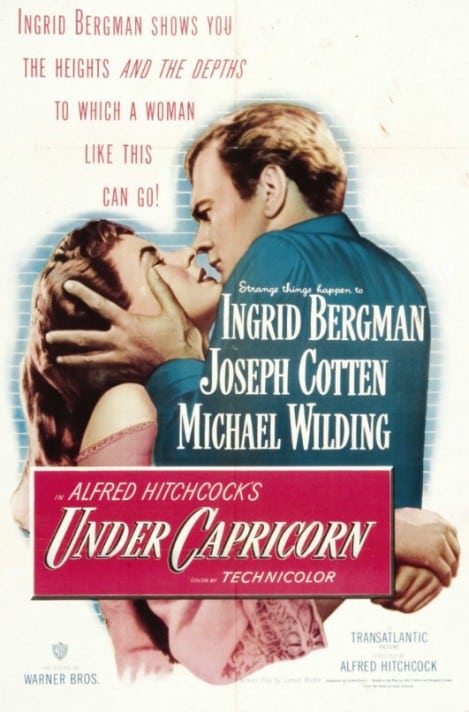
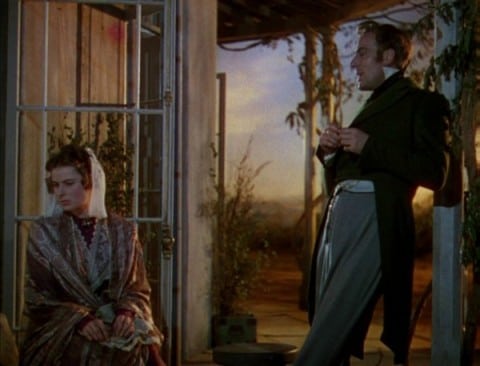
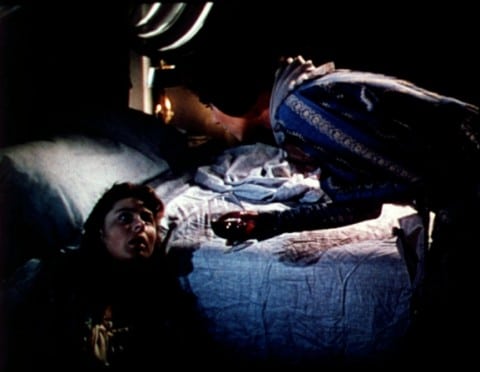



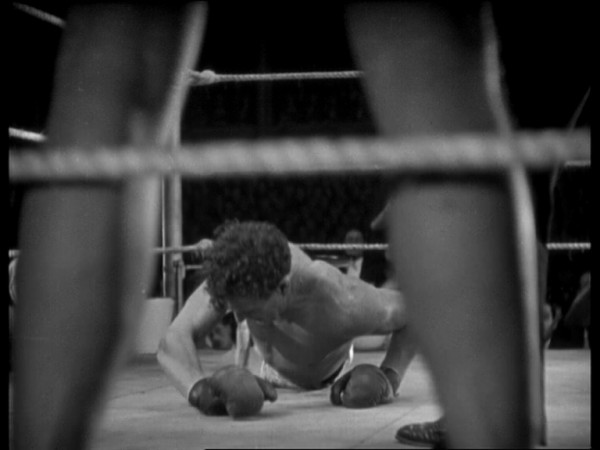
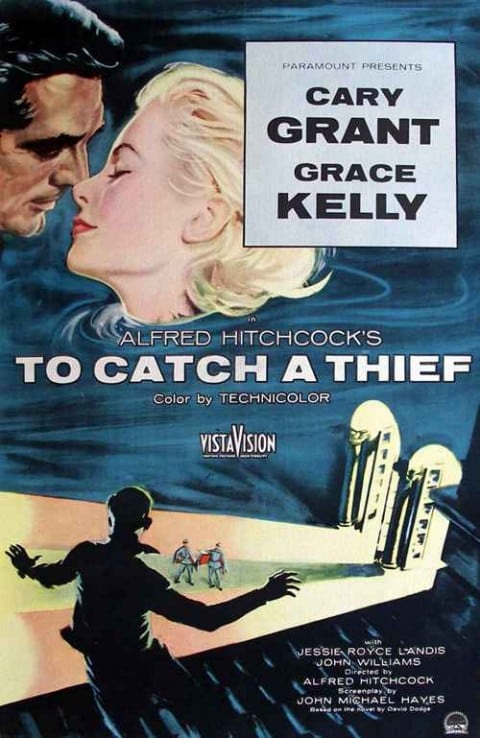

Be the first to comment